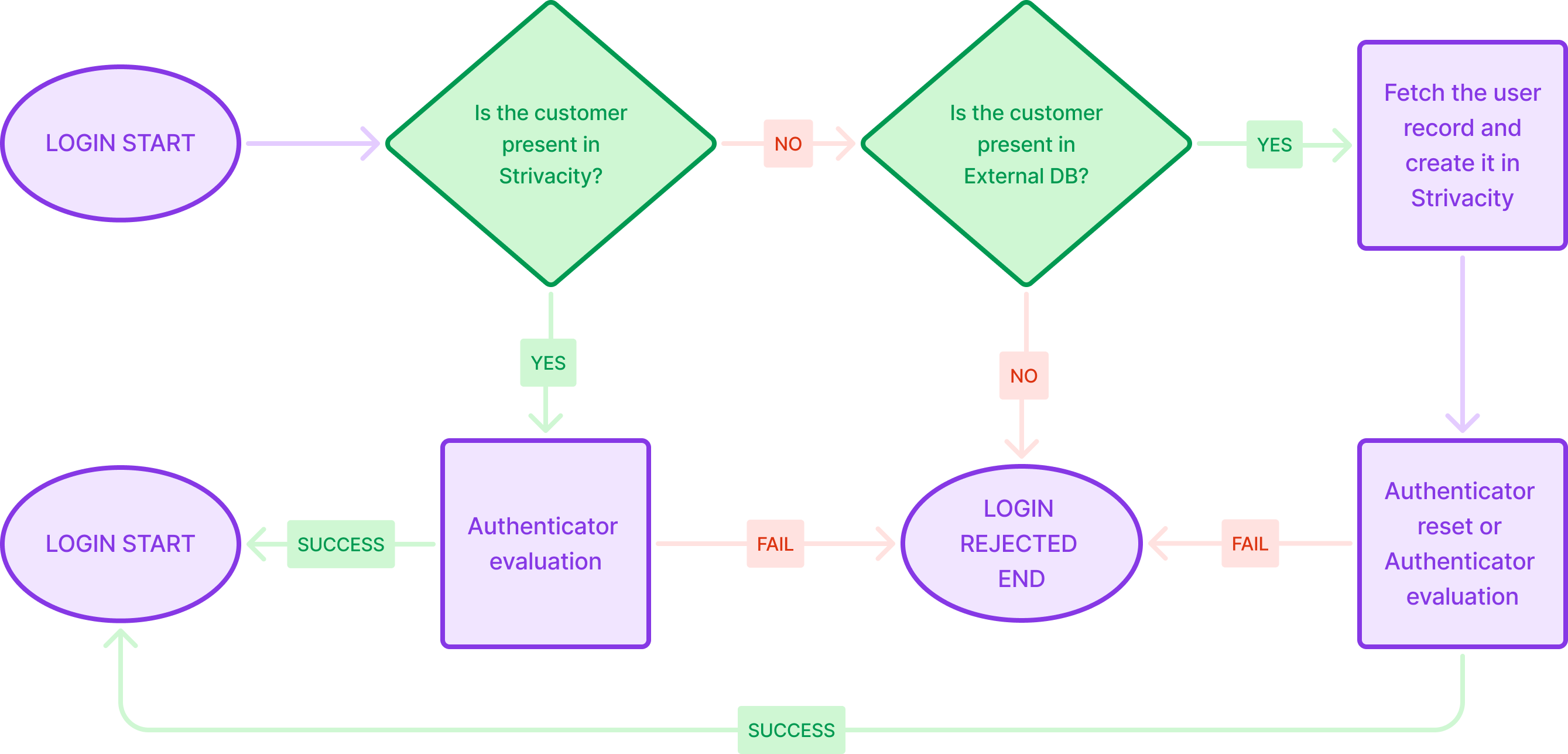Just-in-time migration
Strivacity's just-in-time (JIT) migration allows for the seamless and secure transfer of customer data during the authentication process. This method ensures customers' data is migrated only when they log in, reducing overhead and improving efficiency.
Capabilities
- On-demand data transfer: customer data is migrated at the moment of authentication, ensuring only active customer data is transferred.
- Security: robust security measures are employed to protect customer data during the migration process.
- Scalability: JIT migration can handle large volumes of customer data without compromising performance.
- User Experience: ensures a smooth transition for customers, with no noticeable disruption during login.
Migration process
- Customer login: when a customer attempts to log in, Strivacity checks if the customer account is already in the system.
- Data fetching: if the account is not present, Strivacity checks the legacy database to see if the account exists there
- Password migration if the account exists in the legacy database, Strivacity will attempt to authenticate the user in the legacy system with the password they used to log in. If the password successfully authenticates against the legacy system, Strivacity will store the presented password as the customer's password for that account.
- Data transformation: the retrieved data is transformed to fit the schema of the target Strivacity identity store.
- Data storage: the transformed data is securely stored as an account in Strivacity.
- Authentication completion: the customer is authenticated and granted access.

Extensibility options
- Custom scripts and hooks: use custom scripts to handle specific data transformation needs. Implement hooks to execute these scripts at designated points in the login flow.
- API integration: integrate with various APIs to streamline the data fetching and storage processes.
- Logging and monitoring: implement comprehensive logging and monitoring to track migration progress and identify potential issues.
Best practices
- Pre-migration assessment: conduct a thorough assessment of your legacy system and data to identify potential challenges.
- Data validation: implement robust data validation processes to ensure the accuracy and integrity of migrated data.
- Testing: perform extensive testing of the JIT migration process to identify and resolve issues before going live.
- Customer communication: inform customers about the migration process to manage their expectations and provide support as needed.
Updated over 1 year ago
